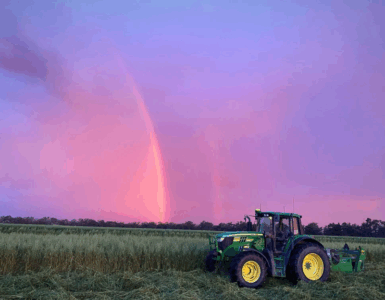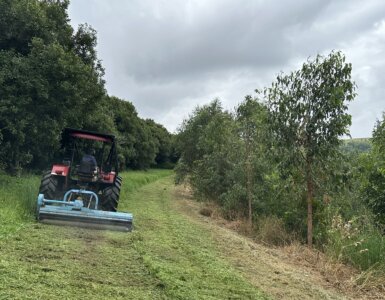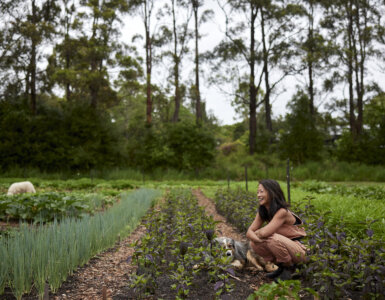On any road trip from Grafton in NSW to Mossman in northern QLD, you will pass fields of rippling green sugarcane, growing tall with the sunlight and abundant water that comes with coastal living.
Among the canes, from May to December, you will find small trains carting the harvested product to mills. This is Australia’s sugarcane industry, comprised of over 4000 farms, and in its heart you will find Proserpine and 32-year-old Justin Blair.
Sugarcane farming
Justin is a fourth-generation farmer, working alongside his father and younger brother, and manager of the family’s 300ha property and, even if you know nothing about cane-growing, he is happy to share.
“Sugarcane is grown using vegetative propagation,” he says. “Small sections of stalk, called billets, are planted into the ground and new cane sprouts from these.
“After approximately 12 months, when the sugar content is high, the plants are harvested, and then commence to grow again. The plants are then called ratoons and can continue to be harvested from three to six years before replanting of new, clean and disease-free billets is required.”

It may sound deceptively simple but like any farming cane growing is complex. In a good year, when rainfall meets the crop’s needs, Justin’s farm can harvest 24,000 tonnes of sugarcane. In a dry year this can drop to 15,000.
“Around 20,000 is our average and that’s what people aim for to be a sustainable business,” he says.
Environmentally conscious
Being close to the Great Barrier Reef means Justin is especially mindful of his fertiliser and herbicide regimes, making sure to match his use to what is required by the growing plants to mitigate harmful run-off.
Farming here also means cyclones. “We dodged one recently, but we copped it from Cyclone Debbie in 2017,” he says. “Sheds were destroyed, and we got 50% of our harvest, but it’s not just the immediate effects. The cyclone damaged ratoons and we have only recently finished replacing them and are finally back to full production.”
Justin had been working on the farm most of his life but by 2013 “I got sick of being told what to do and I wanted to know why I was doing things and how it all ran” so he completed a Diploma of Agriculture and returned to the farm to assume management responsibilities.
“It would be a walk in the park if there was a guaranteed high sugar price and perfect weather.”
“Sometimes there is an oversupply of sugar and you don’t get paid enough to cover your growing costs and sometimes your crop gets beaten up by the weather or your sheds get blown to bits, but it’s all part of the job and you need to trust your judgement and plan for what you can.”

Leadership to inspire the next generation
Taking on leadership on the farm has been reflected by also taking on leadership roles in industry. In 2019 Justin was a founding member of Proserpine Young Farmers. He sits on the boards of Canegrowers Proserpine Co-op and Sugar Services Proserpine and in 2024 is part of the CANEGROWERS Next Ratoon Program designed for industry’s emerging leaders.
“Farming is a big part of the world and people put a lot of importance on their food and how their environment is treated and so it is important we, as the younger generation, are involved,” he says. “By connecting we learn together.”
This connection has led to innovative practices. In 2007 the Blairs joined forces with two neighbours to purchase a planter, cane-harvester and two trailers for billets. All share the use and contract the machinery out to cover costs. In 2017 Justin and his father investigated the emerging industry of finger limes and planted 500 trees, which adds diversification to the bottom line.
But sugarcane will remain the farm’s core business for the foreseeable future.
“It is a brilliant crop, it uses hardly any fertiliser or chemical, you only replant a portion of the crop every year and it can make food, fuel and even plastics from the fibrous waste-product.”
Justin says. “It’s a very versatile crop and we do our very best to grow it for everyone.”








































Add comment